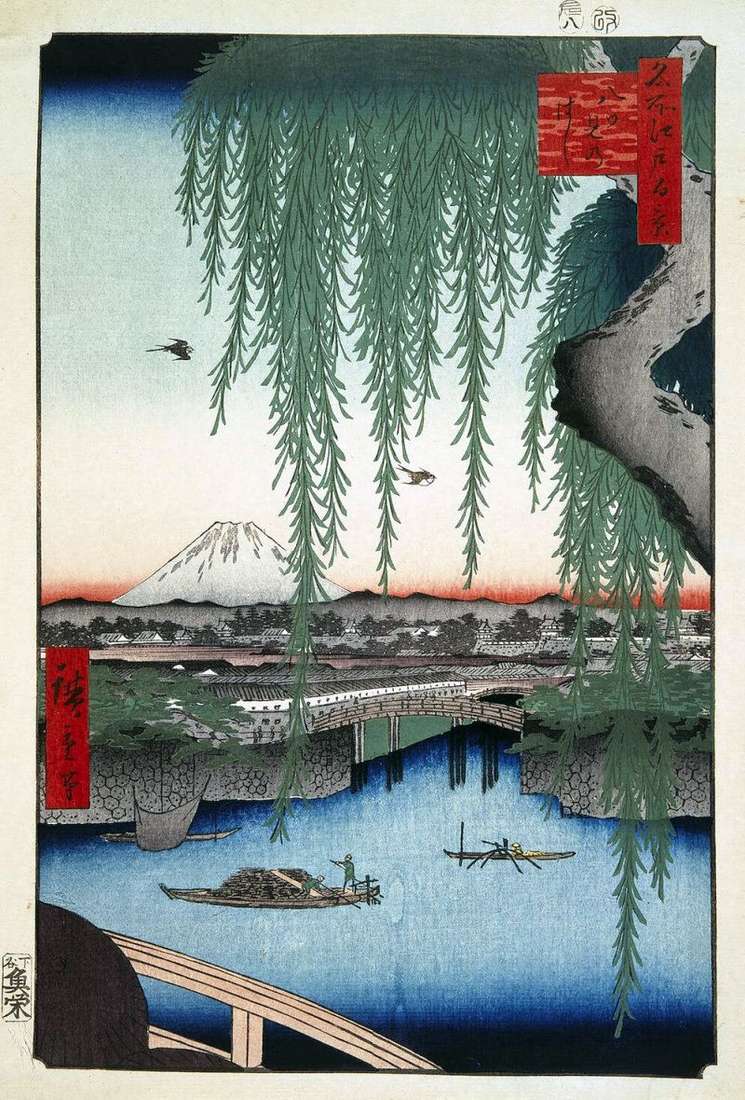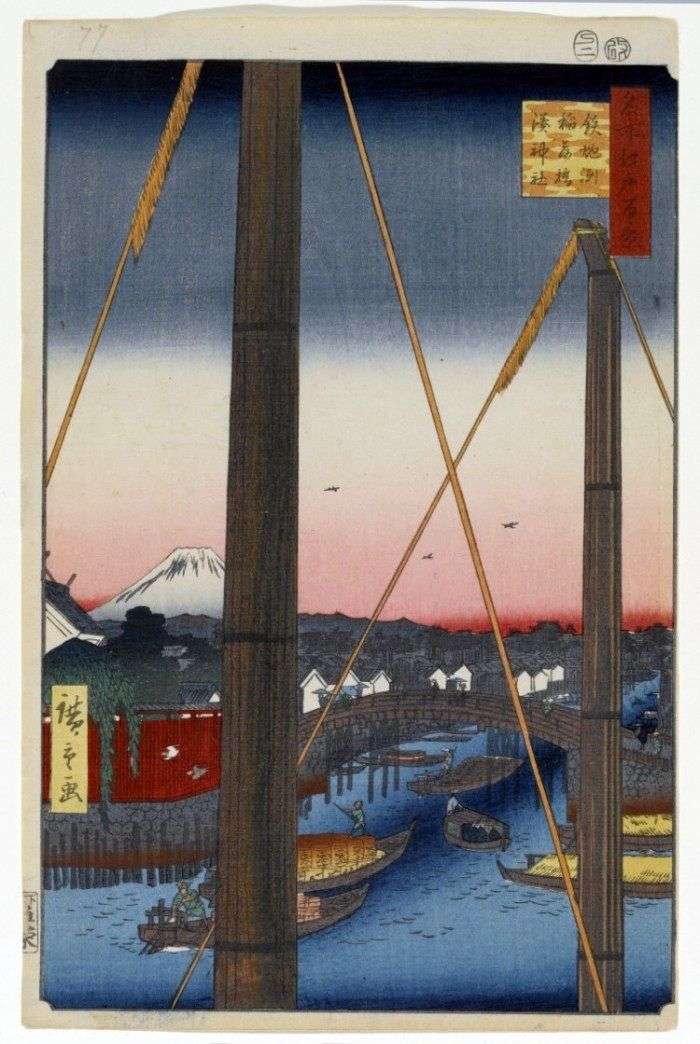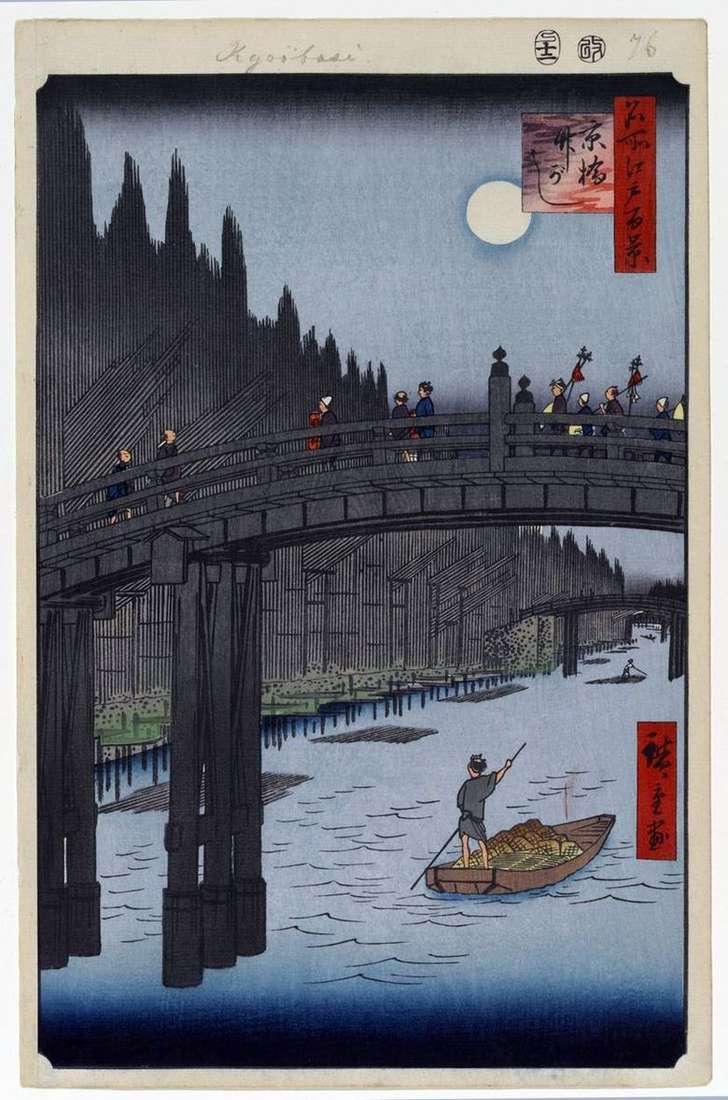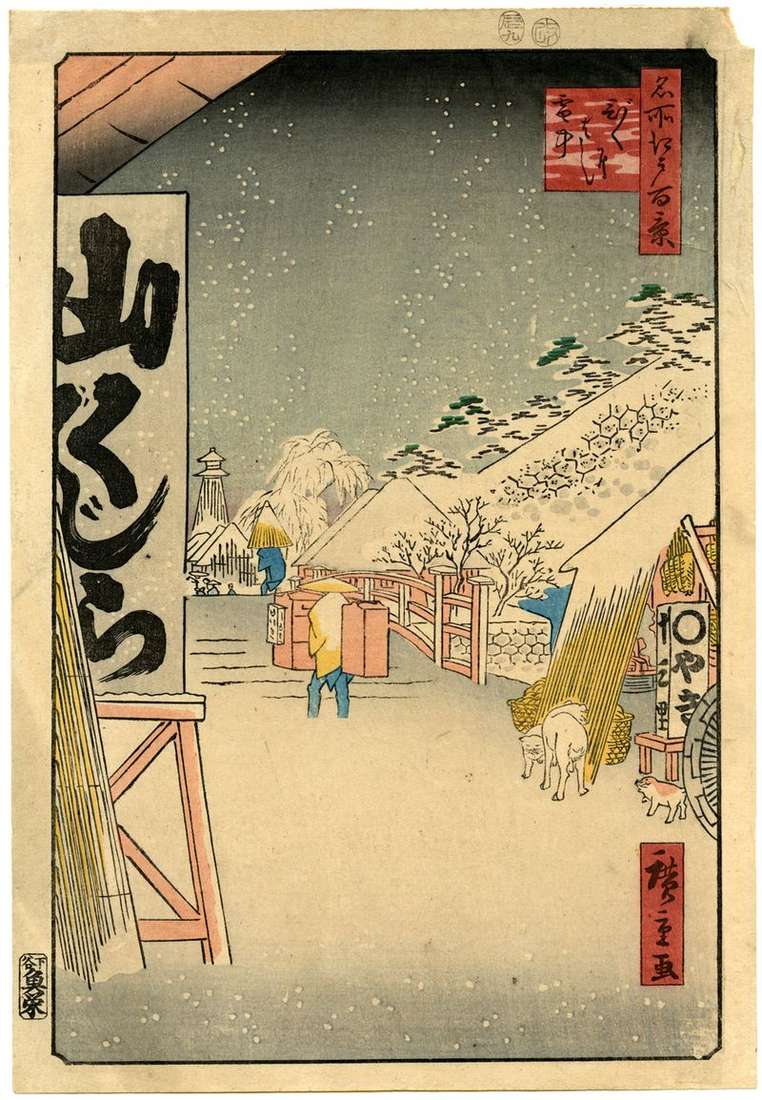
The river Kebasigawa was called the upper course of the Canutebori Canal, which served to pass the vessels towards the Edo Gulf. The bridge over the river Kebasigawa was called Kebashi. He was one of the oldest in Edo. On the railing of the bridge knobs in the form of a bulb, as on Nihonbashi. The northern bank of the lower reaches of the river was called the Takegashi embankment. There were wholesale stores selling bamboo, which was supplied from the peninsula of Boso and from the prefecture of Simosuke-no kuni on rafts.
Such engravings are visible in engraving. Bamboo was piled on the quay, which resulted in the formation of a wall of bamboo. The height of the wall is greatly exaggerated Hiroshige. In front of the bridge is a boat with bamboo products. In the distance you can see the bridges of Sumiyabashi, Sirauobasi. Even further, behind the bridges, on the left bank is the Honhat-tebori quarter. In the light of the full moon, a group of townspeople passes through the bridge, one of them with a lantern in his hand.
Shibuy Kiyoshi deciphered the inscription on the lantern: this is the name of the carver Ekogawa Horitake, who worked with Hiroshige on the series. In both sheets a dark blue strip runs across the river, in the foreground. In the later version, the ox is shaded along the shore and the sky behind the bridge. Around the moon appears a blue halo. The color of the cartouche also changes.
 Nihonbashi bridge in clear weather after snowfall by Utagawa Hiroshige
Nihonbashi bridge in clear weather after snowfall by Utagawa Hiroshige Embankment Koumae by Utagawa Hiroshige
Embankment Koumae by Utagawa Hiroshige The Ohashi Bridge in Senju by Utagawa Hiroshige
The Ohashi Bridge in Senju by Utagawa Hiroshige Yayoumi Bridge by Utagawa Hiroshige
Yayoumi Bridge by Utagawa Hiroshige Inari-basi bridge in Teppozu, the sanctuary of Minato-jinja by Utagawa Hiroshige
Inari-basi bridge in Teppozu, the sanctuary of Minato-jinja by Utagawa Hiroshige Puente Kebasi y Takegashi Quay – Utagawa Hiroshige
Puente Kebasi y Takegashi Quay – Utagawa Hiroshige The Regokubasi Bridge and the Okavabat Quay by Utagawa Hiroshige
The Regokubasi Bridge and the Okavabat Quay by Utagawa Hiroshige Snow-covered bridge Bikunibasi by Utagawa Hiroshige
Snow-covered bridge Bikunibasi by Utagawa Hiroshige